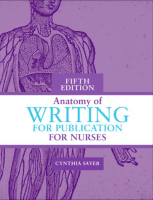When the mythological Pandora opened her box, she unleashed on mankind many evils—greed, violence, disease, hunger, poverty, war, prejudice, hatred, and despair. When she realized these evils were escaping into the world, she tried to close the box quickly, but failed. Some say she peered into the bottom and saw Hope (which the Greeks saw as an evil) resting there. Others say she returned to the box some time later and opened it a second time, only to see Hope fluttering into the world as well.
The word “hope” appears in news headlines almost daily. Hope for home mortgages, hope for jobs, hope for our soldiers’ safe return, hope for the economy to turn around, hope for diplomatic solutions for peace, hope for promising new discoveries, hope for cures for ravaging illnesses.
Hope played a crucial role in the 2008 presidential election. In July 2004, then Senator Barack Obama, delivering the keynote address to the Democratic National Convention, urged Americans to reflect on whether we “participate in a politics of cynicism or do we participate in a politics of hope?”. He elaborated on the thoughts and actions that can change the world—“Hope in the face of difficulty. Hope in the face of uncertainty. The audacity of hope!”
According to Christian beliefs, hope is one of the three theological virtues, the other two being faith and charity. When used as a noun, hope is defined as something wished for or desired; when used as a verb, it means to look forward to with expectation.
Everyone has hopes. Hope is subjective and difficult to describe, yet each of us understands what it means. Hope may be an essential life-sustaining response to a threatening event. It draws on positive inner strength and for some, spiritual strength, which may work synergistically with the support of family and friends during active phases of coping and care.
Pessimists have their own view. Some believe hope is the most evil of evils, as it seduces humankind into wanting something better. In his book Human, All Too Human (1878), philosopher Friedrich Nietzsche wrote that “hope in reality is the worst of all evils because it prolongs the torments of man.” This echoes certain interpretations of the myth of Pandora that characterize woman as cunning and deceptive, far beyond curious. In his play Measure for Measure, William Shakespeare proclaimed, “The miserable have no other medicine but only hope.” Benjamin Franklin expressed pessimism about human frailty in Poor Richard’s Almanack: “He that lives upon hope will die fasting.”
Yet it’s often hope that sustains us when we suffer adversity. We hope for survival, for relief of pain, for peace, for a better tomorrow. We believe in hope as an integral part of a helping relationship. Hope isn’t just positive thinking. Hope is humanity’s comfort. It drives people to achieve the impossible.
When emigrants ventured from Europe to America, they did so with hope against overwhelming odds and uncertain futures. Throughout the centuries, patients and their families have endured life-altering experiences that require them to cope and adjust to change. In their article “Maintaining hope in transition: A theoretical framework to guide interventions for people with heart failure,” Davidson et al proposed a model for nursing interventions that helps patients with heart failure focus on positive future orientation and enhances the ability to cope and adjust. Supportive care, they postulated, eases the transition of life circumstances while a philosophy of hope is essential to achieving a positive future orientation. Effective nursing care promotes hope, minimizes uncertainty, and establishes as much control as possible within the patient and family.
In his three-volume book The Principle of Hope, published in the 1930s and 1940s, German Marxist philosopher Ernst Bloch described society’s orientation toward a socially and technologically improved future. He believed in a utopian human world without oppression or exploitation.
In our professional roles, we share thoughts of hope and optimism. We aim to return control to those for whom we care, reducing their fear and uncertainty in the process. In our personal lives, we can draw on these same strengths. We can dream forward, projecting our future and pondering what can be.
Pamela F. Cipriano, PhD, RN, FAAN, NEA-BC
Editor-in-Chief


















1 Comment.
Bottom line, one has to be realistic with his/her hope…..do not die fasting!